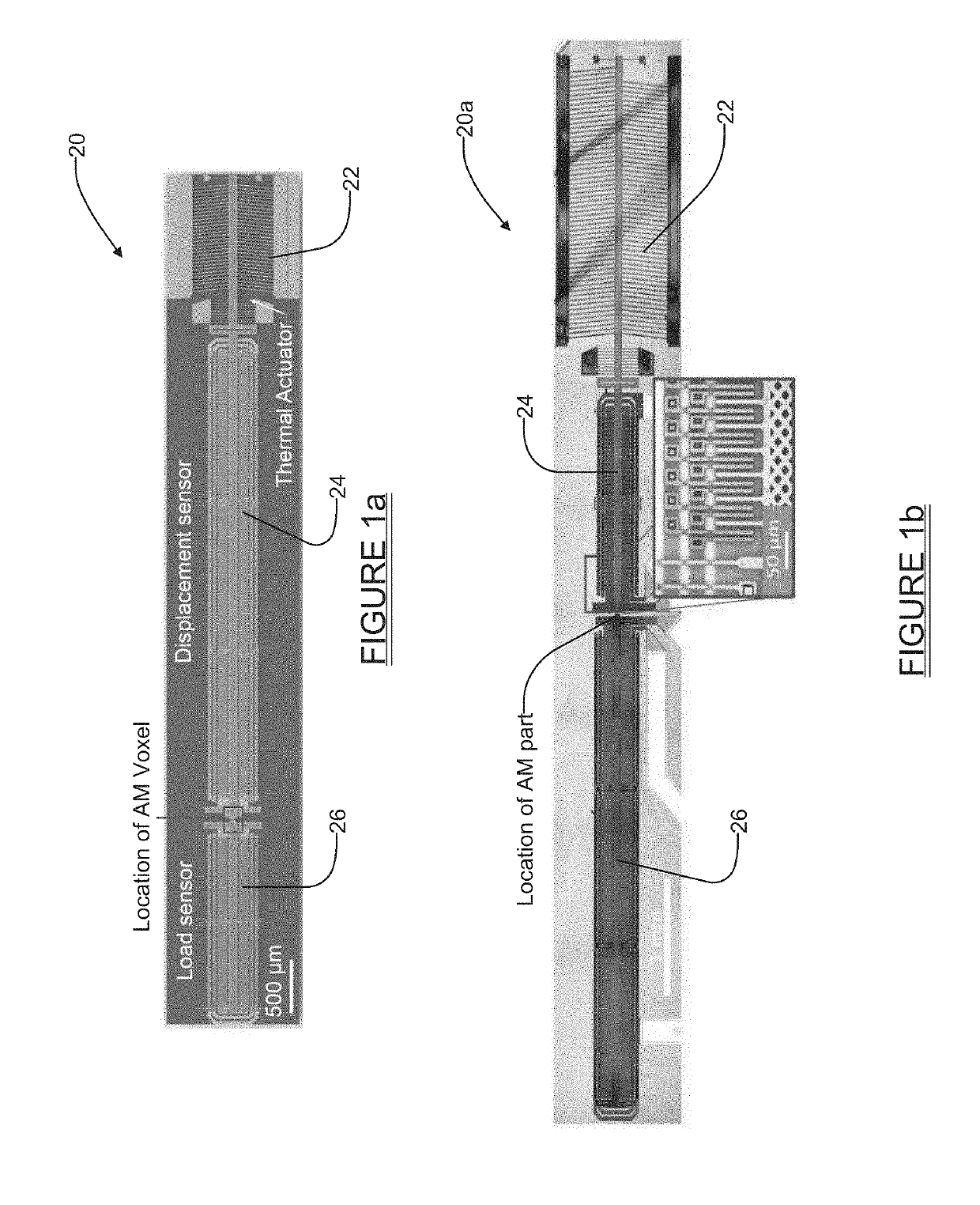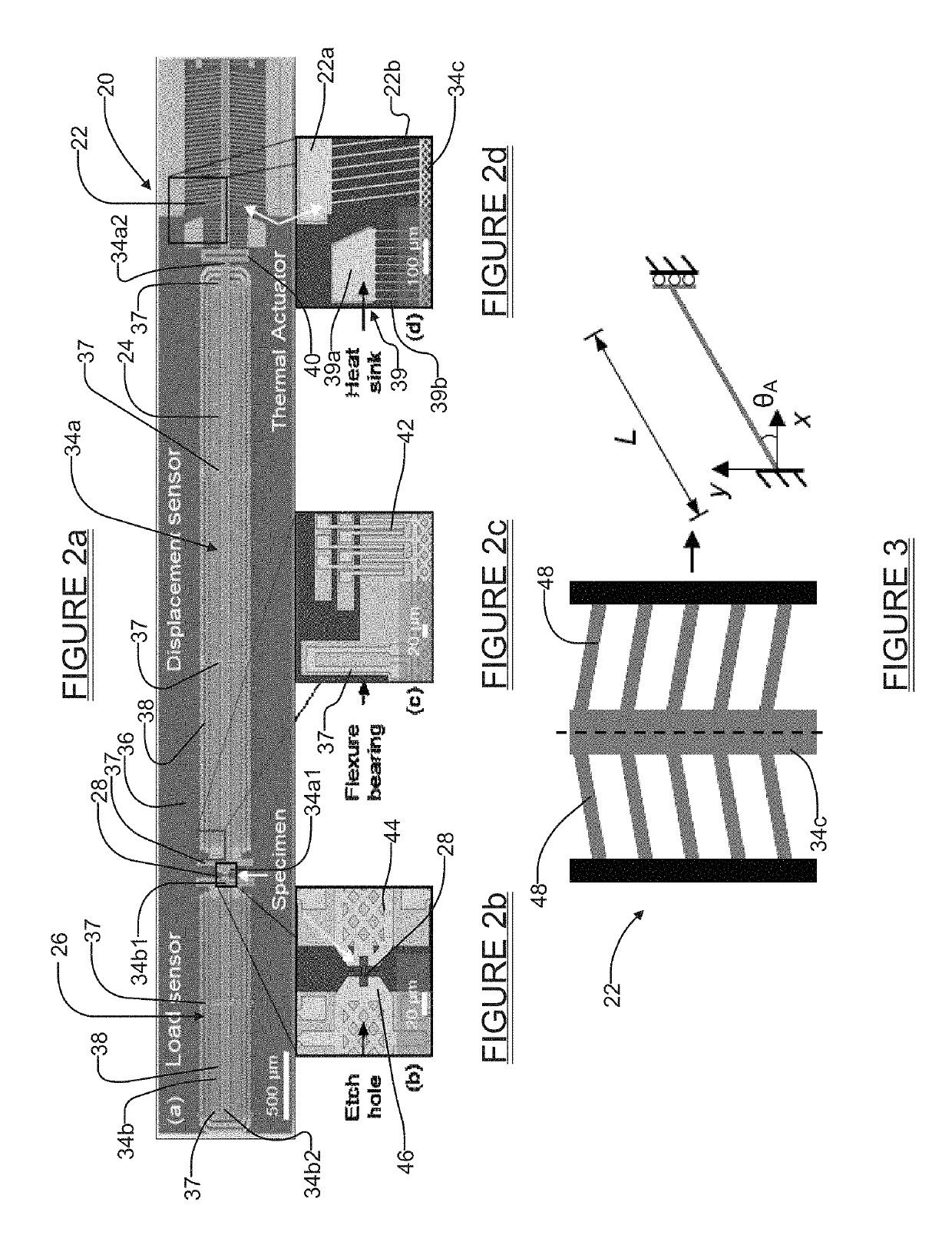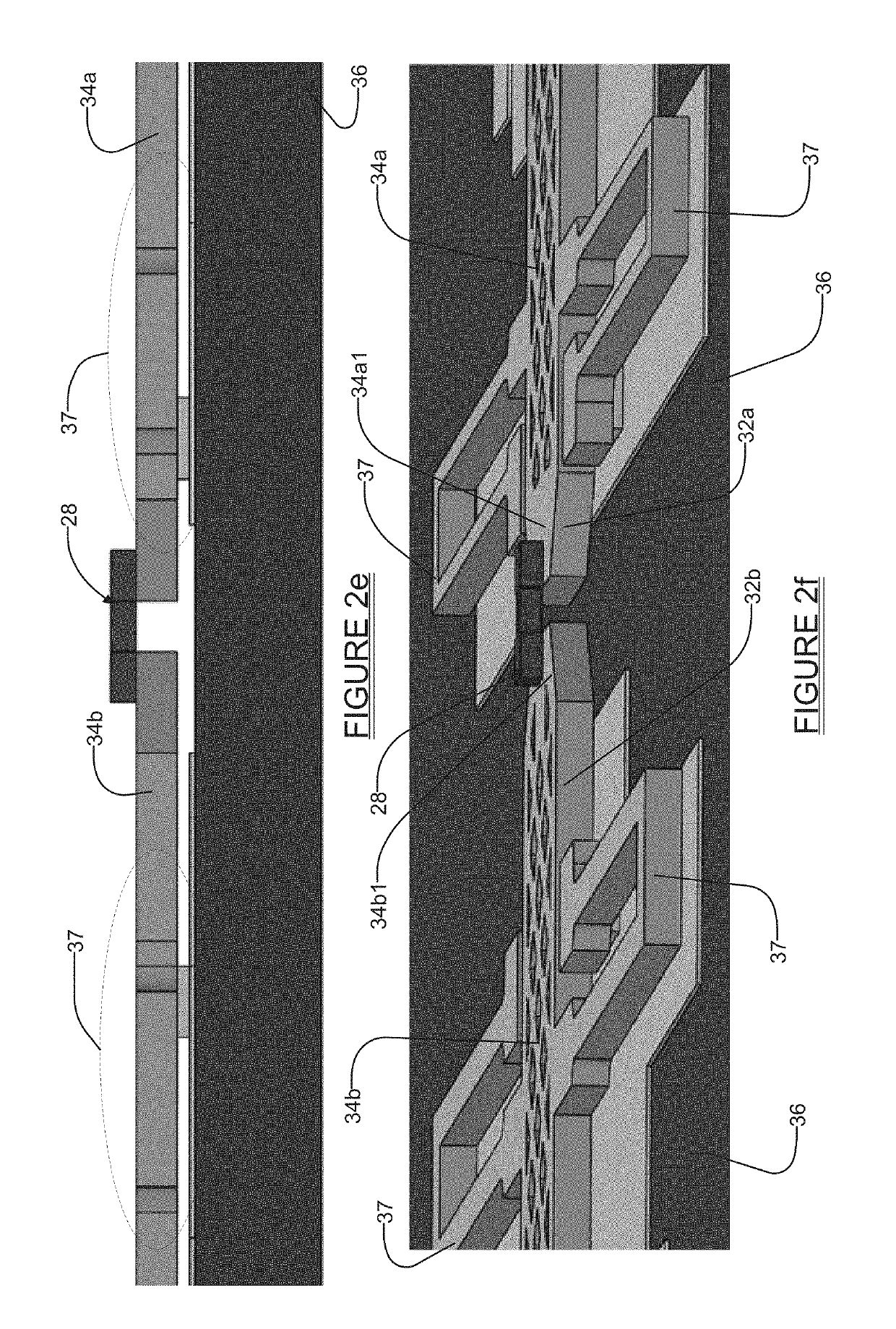Microscale sensors for direct metrology of additively manufactured features
a technology of additive manufacturing and micro-scale sensors, which is applied in the direction of force measurement, instruments, and mechanical means, can solve the problems of not solving the specific problem of direct measurement of mechanical properties of submicron printed features in the past, and the commercial techniques for such direct measurements on the 100 nm feature scale are not available today, so as to improve the pattern transfer for the metallization step, simplify the fabrication process, and eliminate a number of post processing steps.
- Summary
- Abstract
- Description
- Claims
- Application Information
AI Technical Summary
Benefits of technology
Problems solved by technology
Method used
Image
Examples
Embodiment Construction
[0035]Example embodiments will now be described more fully with reference to the accompanying drawings.
[0036]The system and method of the present disclosure enables direct measurement of the mechanical properties of submicron features on a scale that is relevant to additively manufacture larger structures. Specifically, the present disclosure enables measuring (a) stress-strain response of the elementary features, (b) strength of the elementary features and (c) strength and stiffness of a single stitch interface, i.e., the interface between two elementary features or between two assembled structures. The present disclosure overcomes the limitations of prior art systems and methods by enabling the printing of polymer features directly on top of the MEMS (Microelectromechanical System) sensors. To enable this integration, our devices have been designed to include features that suppress the stiction effect. This integration enables directly measuring the force-displacement response of ...
PUM
 Login to View More
Login to View More Abstract
Description
Claims
Application Information
 Login to View More
Login to View More - R&D
- Intellectual Property
- Life Sciences
- Materials
- Tech Scout
- Unparalleled Data Quality
- Higher Quality Content
- 60% Fewer Hallucinations
Browse by: Latest US Patents, China's latest patents, Technical Efficacy Thesaurus, Application Domain, Technology Topic, Popular Technical Reports.
© 2025 PatSnap. All rights reserved.Legal|Privacy policy|Modern Slavery Act Transparency Statement|Sitemap|About US| Contact US: help@patsnap.com



